Yeast is commonly used as a leavening agent in bread and other baked goods. It helps the dough rise by producing carbon dioxide gas, resulting in a light and airy texture.

Handling yeast in the kitchen is fairly simple if certain tips are kept into consideration. For most people, using yeast may seem intimidating at first; however, with practice and the right techniques, working with yeast can become easy and a routine part of your baking.

Tips to Handle Yeast
Here are my top 10 tips to bake with yeast successfully. If you keep the following points in mind, the chances of failure are none.
- Yeast is a living organism (yikes) and gets activated with warm water and feeds on sugar. Since its a living organism, it is sensitive so always check for expiry and storage method. I keep mine in freezer.
- Yeast comes in many forms, granules, instant and fresh. Differences are minor, usage is a little different but the results are same. I use instant that can be added directly to the dough!
- Yeast dough need warm place to rise so in winters you might want to place your dough near a stove or in an oven which has been warmed up and closed (VERY IMP). If its hot in your kitchen then you don’t need to keep it near stove and make sure you don’t over proof because it will rise very quickly!
- Use room temperature ingredients in yeast dough as with all other baking but specially with yeast as cold ingredients can hinder in yeast activation. Liquid used is however, lukewarm in almost all recipes.
- Remember, the consistency and quality of dough is directly proportional to the final product. Hence working towards smooth, elastic and soft dough will yield good breads.
- Don’t cut the breads while they are still hot or even warm else the steam will escape and will make the bread irreversibly chewy.
- The breads freeze well as compared to over the counter or fridge storage. You can wrap the prepared product in cling wrap, then in plastic bag and freeze. Bake in a hot oven for 10 mins when needed.
- Since commercial products add preservatives, the breads keep well for even a week. Not in our case though, therefore, consume fresh for optimal taste.
- Always cut breads with serrated knives or roller cutter in case of pizzas.
FAQs
What are the different types of yeast and how do they differ from one another?
Yeast comes in many forms, granules, instant and fresh. Differences are minor, usage is a little different but the results are same.
How do I activate or proof yeast before using it in a recipe?
If you are using instant or fresh yeast, you can use it directly in your recipe. If you are using granulated yeast, you need to dissolve it first in water and pinch of sugar and wait for 5 minutes until it is foamy.
Can I substitute instant yeast for active dry yeast or vice versa?
Instant and granulated yeast are both active dry yeast which can be interchanged easily however the method of using them differs.
What are some common reasons for yeast dough not rising properly?
Yeast is a living thing and if exposed to moisture or humidity it can go bad or ineffective.
Can I use expired yeast in my recipes?
This is probably one of the most common cause of failed yeast products. Always check for an expiry, and proper storage. Do not buy in bulk.
How can I store yeast to keep it fresh for longer?
I always keep my yeast in a glass bottle in freezer to avoid any exposure to the moisture.
Related Recipes
For practicing use of yeast in baking, you can try out 15 recipes on the blog here or check out this video of Pizza recipe.
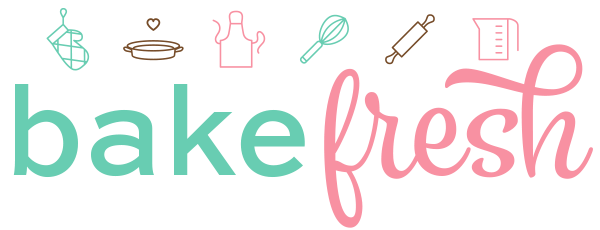
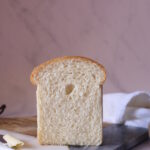
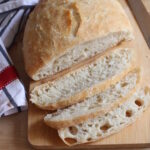
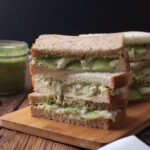
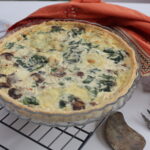
retrovir 300mg drug – lamivudine 100 mg generic buy zyloprim 100mg for sale
buy clozaril 50mg without prescription – accupril buy online famotidine 40mg oral
cheap seroquel 50mg – order generic venlafaxine 150mg eskalith sale
buy anafranil 50mg online – order celexa 40mg order doxepin 25mg without prescription
hydroxyzine ca – nortriptyline cost buy endep tablets
augmentin 625mg canada – linezolid generic buy cipro sale
amoxil pill – erythromycin buy online ciprofloxacin 500mg cost
cost zithromax 250mg – buy flagyl 200mg online cheap order ciplox 500 mg
stromectol medication – eryc 250mg pills where can i buy cefaclor
generic albuterol 2mg – buy albuterol pill pill theo-24 Cr
Thanks designed for sharing such a nice thinking, post is pleasant, thats why
i have read it entirely
methylprednisolone 8mg without prescription – methylprednisolone 8 mg without a doctor prescription astelin for sale
buy desloratadine 5mg generic – beclamethasone order albuterol over the counter
purchase micronase online – order generic forxiga 10mg buy forxiga
metformin canada – januvia 100 mg generic order acarbose 25mg online cheap
prandin 1mg uk – empagliflozin uk order jardiance 25mg generic
terbinafine price – purchase terbinafine pills griseofulvin order online
indian pharmacy paypal http://indiaph24.store/# indian pharmacy online
cheapest online pharmacy india
order ketoconazole 200mg for sale – ketoconazole cheap generic sporanox 100mg
order famciclovir sale – zovirax 400mg uk valaciclovir oral
http://indiaph24.store/# cheapest online pharmacy india
mail order pharmacy india [url=https://indiaph24.store/#]indian pharmacy[/url] online shopping pharmacy india
mexican online pharmacies prescription drugs: Mexican Pharmacy Online – п»їbest mexican online pharmacies
http://ciprofloxacin.tech/# buy ciprofloxacin
lisinopril 2.15 mg [url=http://lisinopril.network/#]lisinopril 2.15 mg[/url] how much is lisinopril 20 mg
cytotec buy online usa: buy cytotec pills – purchase cytotec
https://ciprofloxacin.tech/# cipro 500mg best prices
п»їcytotec pills online [url=http://cytotec.club/#]buy cytotec pills[/url] buy cytotec online
antibiotics cipro: ciprofloxacin 500mg buy online – cipro 500mg best prices
http://nolvadex.life/# tamoxifen rash
order digoxin 250mg generic – purchase avapro generic order lasix 100mg generic
cost propecia prices [url=http://finasteride.store/#]order cheap propecia without a prescription[/url] cheap propecia without rx
order propecia for sale: cost of propecia online – buying generic propecia for sale
https://lisinopril.network/# lisinopril price
cost generic propecia online [url=https://finasteride.store/#]generic propecia tablets[/url] buy propecia online
http://finasteride.store/# cost generic propecia without prescription
tamoxifen alternatives premenopausal [url=http://nolvadex.life/#]tamoxifen and weight loss[/url] where to get nolvadex
nolvadex d tamoxifen effectiveness or tamoxifen for sale
http://www.google.md/url?sa=f&rct=j&url=https://nolvadex.life/ how to lose weight on tamoxifen
[url=https://clients1.google.co.uz/url?q=https://nolvadex.life]tamoxifen and uterine thickening[/url] tamoxifen and grapefruit and [url=http://www.tmml.top/home.php?mod=space&uid=78659]tamoxifen pill[/url] does tamoxifen cause joint pain
antibiotics cipro: cipro – ciprofloxacin order online
https://cytotec.club/# cytotec buy online usa
cipro generic: ciprofloxacin generic – ciprofloxacin generic price
tamoxifen for breast cancer prevention [url=https://nolvadex.life/#]tamoxifen side effects forum[/url] nolvadex only pct
nolvadex steroids [url=https://nolvadex.life/#]nolvadex pct[/url] tamoxifen lawsuit
prinivil online: zestril 20 mg price canadian pharmacy – prinivil coupon
http://ciprofloxacin.tech/# п»їcipro generic
get generic propecia pills cost cheap propecia without dr prescription or buy propecia tablets
https://www.google.com.na/url?q=https://finasteride.store propecia tablet
[url=https://cse.google.gl/url?sa=t&url=https://finasteride.store]order propecia for sale[/url] buying generic propecia no prescription and [url=http://talk.dofun.cc/home.php?mod=space&uid=797573]order cheap propecia without dr prescription[/url] propecia prices